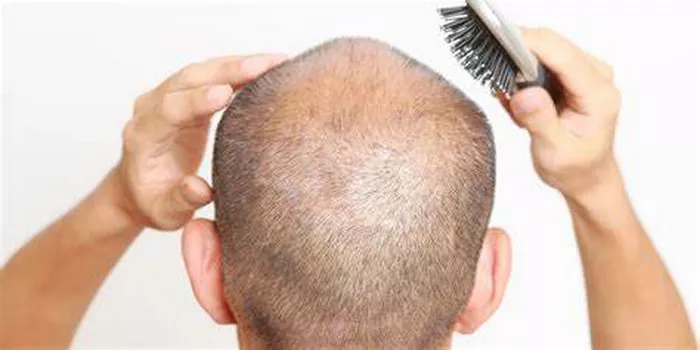Follicular Unit Extraction (FUE) is a popular hair transplantation method known for its minimally invasive nature and effectiveness in treating hair loss. One common question that arises among potential candidates is whether the donor hair grows back after the procedure. Understanding this aspect is crucial for anyone considering FUE, as it directly impacts the overall hair density and the visual outcomes of the surgery. This article delves into the intricate details of FUE, the behavior of donor hair post-procedure, and the long-term implications for patients.
Understanding Follicular Unit Extraction (FUE)
FUE is a technique where individual hair follicles are extracted from the donor area, typically the back and sides of the scalp, and transplanted to the recipient area, where hair thinning or baldness is present. This method contrasts with the older strip harvesting technique, which involves removing a strip of scalp and dissecting it into individual grafts.
The FUE procedure is preferred for its numerous advantages, including:
1. Minimized Scarring: Since FUE involves extracting individual follicles, it leaves behind tiny, almost invisible scars that are easily camouflaged by the surrounding hair.
2. Faster Recovery Time: The less invasive nature of FUE allows for a quicker healing process compared to strip harvesting.
3. Natural-Looking Results: The precision of follicle placement in FUE results in a more natural appearance.
The Donor Area: Characteristics and Significance
The donor area plays a crucial role in hair transplantation. It is typically the region of the scalp where hair is genetically resistant to balding, such as the occipital scalp (back of the head) and sometimes the sides. The characteristics of this area are vital because they ensure that the transplanted hair retains its resistance to hair loss, providing long-lasting results.
Will Donor Hair Grow Back?
A common misconception about FUE is that the extracted follicles might regenerate in the donor area. In reality, once a follicle is removed from its original location, it does not grow back. This is because hair follicles, unlike some other cells in the body, do not have the capability to regenerate once they are entirely removed.
To understand this better, let’s delve into the biology of hair growth:
1. Hair Follicle Anatomy: Each hair follicle is a tiny organ embedded in the skin, responsible for hair production. It undergoes a cyclical process of growth (anagen phase), regression (catagen phase), and rest (telogen phase).
2. Extraction Process: During FUE, the follicle, including the root and its surrounding tissues, is carefully extracted using a micro-punch tool. This extraction is complete, meaning the entire follicle is removed, leaving behind a small wound that eventually heals.
See Also: What is Bosley Hair Replacement: Things You Need To Know
Impact on Donor Area Density
The non-regrowth of donor hair has implications for the overall density of the donor area. Here’s what potential patients need to consider:
1. Density Reduction: Each extracted follicle reduces the density of hair in the donor area. However, skilled surgeons strategically select follicles to minimize noticeable thinning. The remaining hair can cover the tiny extraction sites, making the density reduction less apparent.
2. Harvesting Limits: Surgeons must be mindful of the donor area’s capacity. Over-harvesting can lead to visible thinning and compromise the area’s appearance. A balanced approach ensures that enough follicles are left behind to maintain a natural look.
3. Repeated Procedures: For patients considering multiple FUE sessions, it’s essential to note that the donor area’s capacity is finite. Subsequent procedures must account for the reduced availability of donor follicles.
Factors Influencing Donor Area Recovery
While the follicles themselves do not regrow, the donor area undergoes a healing process. Several factors influence how well this area recovers post-procedure:
1. Individual Healing Capacity: Genetic factors, age, and overall health play a significant role in how quickly and effectively the donor area heals.
2. Surgeon Skill: The expertise of the surgeon in extracting follicles with minimal trauma to the surrounding tissue impacts the healing process. Experienced surgeons use techniques that promote quicker recovery and reduce visible scarring.
3. Post-Operative Care: Adhering to post-operative care instructions, such as avoiding strenuous activities, protecting the scalp from direct sunlight, and using prescribed medications, can enhance the healing process.
Aesthetic Management of Donor Area
Maintaining a natural look in the donor area post-FUE is crucial for patient satisfaction. Here are some strategies:
1. Strategic Extraction: Surgeons often use a randomized pattern for extracting follicles, which helps in blending the extraction sites with the surrounding hair.
2. Micropigmentation: For those with significant donor area thinning, scalp micropigmentation can be used to create an illusion of density. This cosmetic procedure involves tattooing tiny dots that mimic hair follicles.
3. Hair Styles: Choosing appropriate hairstyles can help camouflage any thinning. Shorter haircuts or styles that keep the donor area covered can be effective.
Long-Term Considerations
Patients must understand the long-term implications of FUE on the donor area:
1. Progressive Hair Loss: For individuals with progressive hair loss, the donor area may also eventually thin, albeit at a slower rate. This natural thinning must be considered when planning the number of follicles to be harvested.
2. Hair Characteristics: The quality and characteristics of hair in the donor area, such as thickness and curliness, can influence the visual impact of extraction.
3. Overall Hair Health: Maintaining overall hair health through proper nutrition, avoiding excessive styling damage, and managing stress can help in preserving the remaining hair in both the donor and recipient areas.
Conclusion
In summary, donor hair does not grow back after FUE because the extraction process completely removes the follicles. While this reduces the density in the donor area, the impact is often minimal due to the strategic extraction methods used by skilled surgeons. Understanding the limitations and managing expectations is crucial for anyone considering FUE. With proper planning and care, FUE can provide natural and long-lasting results, enhancing both appearance and confidence.


